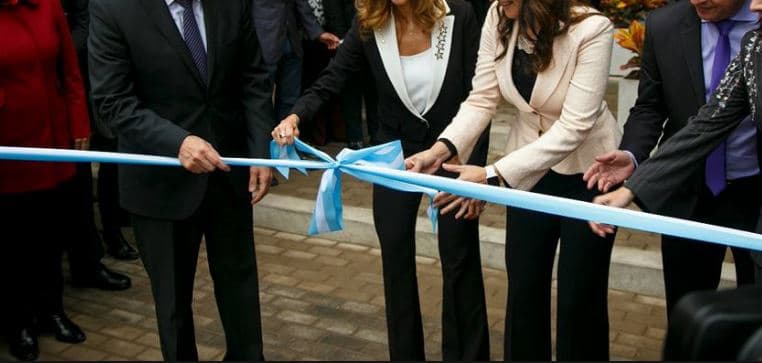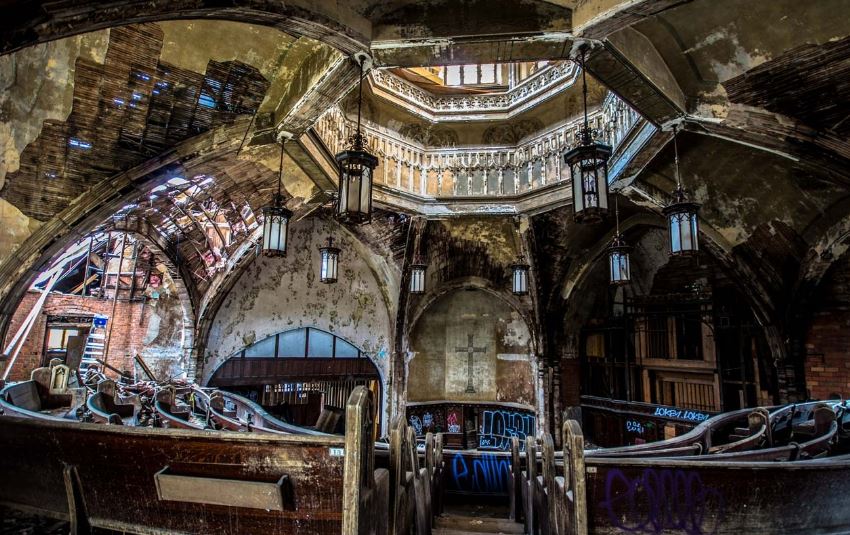-
Phone Number
-
Email Address
In theory, all of us who are related to the architecture we know what is the objective or the functionality that is going to carry out the work that we are building, but… We have raised what will happen in 20 years with the building, or 30 or 40 years? What would happen if the architects considered or meditated, instead of ignoring, the future of a building? …
Obviously, predicting the future in such a change can become a daunting task and this, without add other aspects of political interests, administrative, legislative…etc. that have influenced historically and continues to have a strong influence on the future perspective of utility on a building.
But often it seems that every aspect of the architectural production, from its conceptualization and design, until its materialization and promotion, converge towards the day of the inauguration of a building. The day they are cut wonderful tapes, architects are praised and champagne flows in abundance: the official birth of a building.

In the lead up to this day, there have been published press releases, which contain perfect images of the building and a statement loaded with superlatives. The photoshopped images with shiny surfaces, people success and blue skies, along with promotional marketing, have been posted on social media and major media digital specialized in architecture.
When a building first opens its doors, the journalists flock to the opportunity to take photographs and diligently report on the act of creation of the architect. Tenants receive their keys, and dust settles.
Give full attention to the first glorious moment of a building is, of course, nothing new in the world of architecture, but the fact that a building will survive longer beyond the day of its inauguration is more than ever willfully ignored. In addition to what is said about the sustainable materials “that will last”, are generally not offers a single glimpse of what the real "life" of a building.
Of course, it's hard to predict the future, but new buildings have a long-term influence on their environment and their habitants. Therefore, it is surprising that the projections about how these relationships may develop remain a rarity. What could be the useful life of of a building? How will it be inhabited in the years to come? Could it be used for other purposes in the (distant) future? What will it be like in a few decades? How can they influence new technologies in the way the building is used? What will the continued impact of this building be on the city? .
Architecture, according to Stephan Cairns and Jane M. Jacobs, authors of the book «Buildings Must Die«… it is supposed that buildings have “life”. But what about "death"? of the buildings? What about decay, deterioration and the destruction to which they are inevitably subjects?
Both within the profession and in society at large, is the real materialization of the power and genius of architect what is celebrated, instead of the contribution lasting from a building to society.
This “fixation” is stimulated, of course, by the financial context in which the architecture materializes contemporary. Often the immediate benefit is the reason fundamental part of the creation of a building, which reduces the stakeholder interest in how it will behave socially, financially or physically for a longer period of time long.
The emerging trend in architecture, which became widespread during the financial crisis of recent years, also illustrates the lack of vision for the future in the sector. Although the emerging projects, from a pavilion to homes temporary for refugees, often take into account the entire useful life of a construction, do not offer any perspective on the long-term urban development of an area beyond of that brief and unique intervention.
Also of interest:
This is not only because these projects have to work with a temporary available space and means limited financial resources, but also due to the lack of a vision on how it could have a more lasting impact on the city beyond its current role .
And here we would like to add a brief reflection by Jaume Prat on what is the role of the architect... (See more in the article of What is an architect for?
In the past, failure to account for the possible trajectory future of a building has often led them to "fail". Unable to adapt to new circumstances and developments, many have become obsolete with the passage of time. time and history confirms it.
In addition to the socio-economic impact – often negative – that the abandoned remnants of the past have on their immediate environment, the question of ecological performance becomes increasingly important. Since the sectors of the demolition and construction contribute greatly to the CO2 emissions, we cannot continue building and tearing down buildings at this rate.

Previous image reflects CO2 emissions by sector. From the article on this portal how efficient buildings benefit cities.
The fact that most projects architectural projects of a certain scale leave a spatial legacy of some sort, gives those involved a responsibility . Therefore, the professionals involved in architecture might want to broaden their horizon and try to relate to the future of their projects, at least in some way. without becoming naively utopian, to investigate and speculate about possible social, technological, political developments and the future transformation of the immediate spatial context deserves more care, even being able to become an integral part of contemporary design processes.

There are thousands of ways this challenge can be taken seriously without having to resort to interpretations yet most unreal of the futures that will not come true. By example…
We open another door, another possibility, so that a project can be judged by the intelligence with which it is Consider your future performance. This customer-oriented approach future could play a decisive role in competitions, but it would also allow citizens, those responsible politicians and policy makers to examine a project from a different angle.
This article represents part of the reflections practiced by René Boer in his article «Designing for a buildings future", which works at the intersection between art, architecture, cities and heritage as a researcher, commissioner and activist. You can find out more about their articles from their website Failedarchitecture.com with interesting reports.